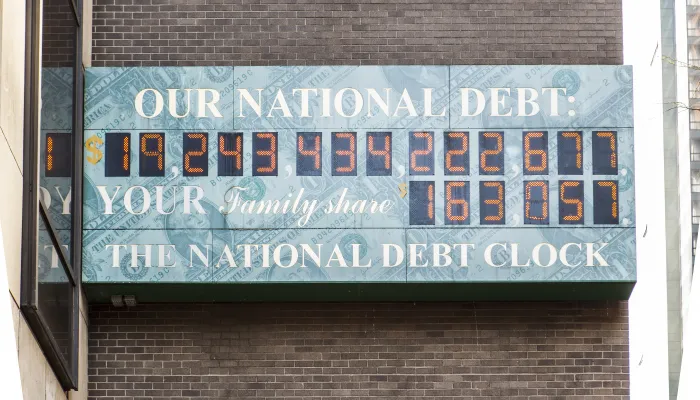The Economic Cost of the Shutdown
As we enter day 2 of the government shutdown, Americans across the country are already feeling the impact. With federal government offices and services shut down throughout the nation, thousands of government employees are furloughed, and there is no clear answer in sight regarding when they will return to work. But what damage will a shutdown do to the economy?
In the past few days, a number of organizations have attempted to quantify the shutdown's economic impact. All of the estimates project that a shutdown will have a negative effect on fourth quarter GDP growth, with a varying impact depending on how long the shutdown lasts. Decreased compensation for federal employees, along with a reduction in purchases made by the government for products and services, will result in decreased federal government consumption as a share a GDP. Decreased consumer confidence could cause further negative economic impacts, which are more difficult to quantify, particularly at the outset of a shutdown.
If the shutdown lasts longer, more government services and agencies will run out of funding. Furloughed employees won't receive their paychecks and consumer spending could drop. Consumer confidence will almost certainly drop as Congress remains at an impasse, and government contractors would lose much, if not all, of their business. There are also many government operations which are helpful to a smooth flow of commerce, like new IPOs approved by the SEC, the monthly jobs report produced by the Department of Labor, and the approval of export licenses. If a shutdown lasts only a few days or a week, these factors likely won't have a large effect. But if the shutdown persists, these larger economic effects will start to show up.
Estimates vary, but a 1 week shutdown would likely decrease fourth quarter annualized growth by 0.1-0.2 percentage points. If a shutdown lasts a month, some estimates show fourth quarter annualized GDP growth decreasing by 1.5-2 percentage points, which would be particularly damaging considering the economy is only projected to grow at between 2.3 and 2.5 percentage points. In addition to the length of a shutdown, whether or not furloughed employees recieve back pay from the federal government would directly impact the economy. It is also worth acknowledging that while negative economic impacts may occur during a shutdown, economists generally agree that there will likely be a slight uptick when a shutdown ends, offsetting part of the negative economic effects.
In addition to the negative economic impacts, it is likely that the shutdown will end up costing the federal government money, as we noted in our recent Q&A on government shutdowns. For the last government shutdowns in 1995, which lasted a combined 26 days, OMB estimated the cost to the government at $1.4 billion, equivalent to $2.1 billion today.
These costs were, and still are avoidable. If Congress had done its job and passed appropriations on time, we would not be sacrificing economic growth at a time when it is sorely needed. However, attention will soon turn toward the looming debt ceiling, which, if breached, could have more devastating economic effects, as we explain in a new Q&A released today. Congress needs to take immediate steps to reopen government, raise the debt ceilng, and use this opportunity to focus on the mounting fiscal challenges we face. Failing to do so would have much greater economic consequences over the long term than any government shutdown.


